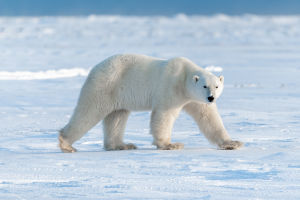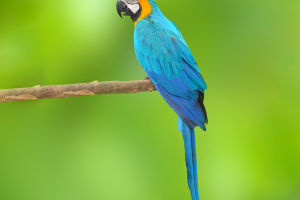The Australian Pelican (Pelecanus conspicillatus) is a striking bird that captivates anyone lucky enough to observe it in its natural habitat. With its impressive wingspan, distinctive bill, and graceful flight, this pelican species is a true marvel of nature.
Here are six fascinating facts about the Australian Pelican that highlight its unique characteristics and behavior.
1.A Staggering Wingspan: One of the most notable features of the Australian Pelican is its massive wingspan, which can reach up to 2.8 meters (9 feet). This expansive wingspan not only aids in their majestic flight but also allows them to glide effortlessly across the sky and soar above various Australian landscapes, from coastal regions to inland waterways.
2.Enormous Bill and Pouch: Australian Pelicans are renowned for their large, distinctive bills, which can be up to 50 centimeters (20 inches) long. The bill is equipped with an expansive pouch that can hold up to 13 liters (3.4 gallons) of water. This pouch is used to scoop up fish and other prey, making it an essential tool for their feeding habits.
3.Diverse Diet: While their diet primarily consists of fish, Australian Pelicans are opportunistic feeders and will eat a variety of aquatic animals. They have been known to consume crustaceans, amphibians, and even small birds. Their hunting technique involves scooping fish from the water while swimming or diving, often using their bill’s unique design to filter out excess water.
4.Social and Cooperative: These pelicans are highly social birds, often found in large colonies. They exhibit cooperative behaviors such as coordinated fishing strategies, where groups of pelicans work together to herd fish into shallow waters for easier capture. This teamwork enhances their fishing efficiency and showcases their advanced social structure.
Everything You Wanted to Know About Pelicans
Video by The World Safari
5.Breeding and Nesting: Australian Pelicans have an interesting breeding cycle. They typically build their nests on isolated islands or riverbanks to avoid predators. Their nests are constructed from sticks, reeds, and other available materials, forming a sturdy platform where they lay their eggs. Both parents participate in incubating the eggs and feeding the chicks. Interestingly, the breeding season can vary depending on local conditions, with some colonies breeding during the wetter months and others during the drier periods.
6.Adaptability and Migration: Unlike many other pelican species, Australian Pelicans are generally sedentary, meaning they do not undertake long migrations. However, they are highly adaptable to changing environmental conditions and can travel substantial distances in search of food or suitable breeding sites. This adaptability helps them thrive in a range of habitats, from estuaries and lakes to rivers and coastal areas.
Lykkers, the Australian Pelican is a remarkable bird with its impressive wingspan, large bill, varied diet, social behaviors, and adaptability. Observing these majestic creatures in their natural habitat provides insight into their intricate behaviors and the important role they play in Australia’s ecosystem. Their presence not only adds to the beauty of the Australian landscape but also underscores the delicate balance of nature they help maintain.


